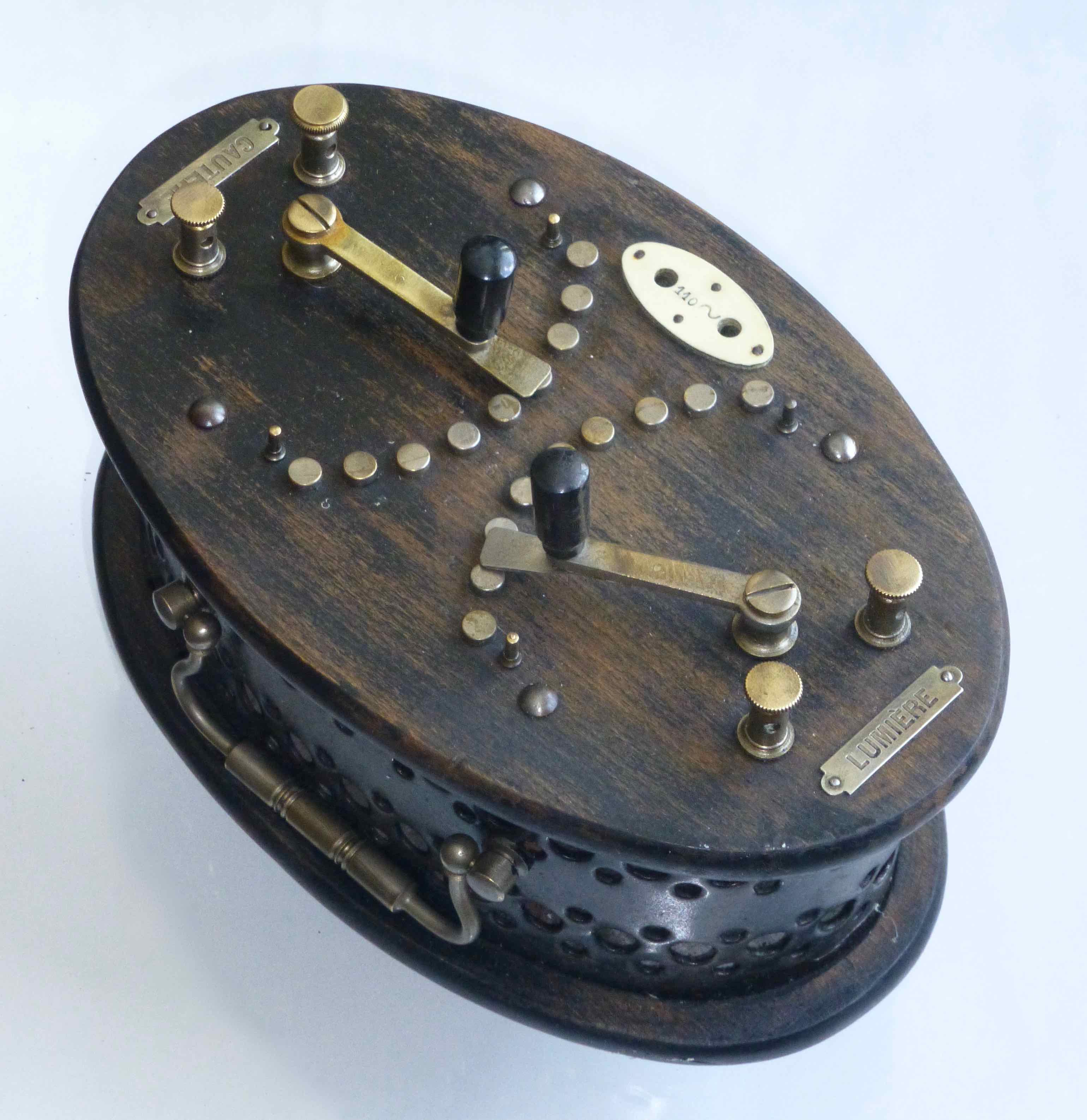 |
|
Transformator 1934
|
In 1845, the Viennese dentist Moriz HEIDER (1816-1866) killed a tooth nerve by means of electrically heated platinum wire - in an interview with the physicist Carl August von Steinheil (1801-1870), who lives in Munich (Alsace), he came up with the idea to replace the usual annealing iron by a glowing by electric current platinum wire.
In 1846, the Finn Gustav Samuel CRUSELL (1810-1858) in St. Petersburg described the same procedure and gave it the name "Galvanocaustie". In April 1847 he removed a sponge of blood on the forehead of one of his patients by means of a glowing platinum loop. Occasionally the method was applied in France (Nelaton, Etiolles). However, the process did not really enter medicine until Albrecht Theodor MIDDELDORFF (1824-1883) in Wroclaw published his success with the electric eyelet in 1854 in his book "Die Galvanokaustik". As one of the first worked with the German surgeon Viktor v. BRUNS (1812-1883), as she allowed operating in hard-to-reach places. Bruns worked with DC (10-20 amps, 3-6 volts).
- In a first phase, doctors produced their own electricity - an expensive and maintenance-intensive process - dealing with the zinc-platinum batteries proved to be extremely difficult. For this reason, many surgeons preferred the pacifier from PAQUELIN, at least in the places that were easy to reach. Lit .: Rüdiger Kramme, Medizintechnik: Process - Systems - Information Processing, Springer Verlag, 3rd edition 2007.
- In a second phase, the surgeons used the AC at the end of the 19th century by the Paris-based Serb Nikola TESLA (1856-1943) and his friend Jacques-Arsène d'ARSONVAL (1851-1940) in that it leads to tissue heating in the frequency range from 2 kHz to 2 MHz WITHOUT inducing muscle or nerve irritation. In 1900 Joseph-Alexandre RIVIERE (1859-1946) in Paris reported successes in the reduction of tumors by spark treatment. The construction of a public power grid around 1895 finally allowed access to this comfortable innovation. Exhibit: "Transformateur portatif pour cautère et lumiere fonctionnant sur courant alternatif de 110 volts" (J. De la Croix, bureaux et factory at 131 de la rue de Vaugirard,) with two rheostats arranged in a round hole, perforated because of the heat, Can be summarized: one for light, another for the cautery. At the same time, the doctor was able to illuminate and burn his surgical field (via a headlamp, for example). The advantage of an electric chewer is that you can cut with it and injured vessels are closed by the heat directly, so it does not come to heavy bleeding. The destruction of the tissue by the incandescent heat carrier can only be determined very roughly in its extent. For this reason, one must always keep far away from large vessels and nerves in order to avoid threatening complications. As a further disadvantage of the method is to be mentioned that the histopathological examination of tumors by the Kauterisation is made difficult (is the tumor in the healthy away?), If the examined tissue at the cut surfaces by heat was destroyed.
Size 23 x 14 x 10 cm, oval shape, side carrying handle. Weight 3.3 kg.
Illustration in: Guillot, Fernand. - Catalog illustré d'instruments de chirurgie, d'appareils de médecine et d'orthopédie Paris: s.n. Ivry: Impr. Of the Ets hyperparaf, 1934 "p. 51" Boîte ovale pour cautère et lumière sur alteratif, réglage par 2 manettes à plots. Usage simultané du cautéère et de la lumiere ... 260 francs ".
Origin: Carrère in Aquitaine.
|




